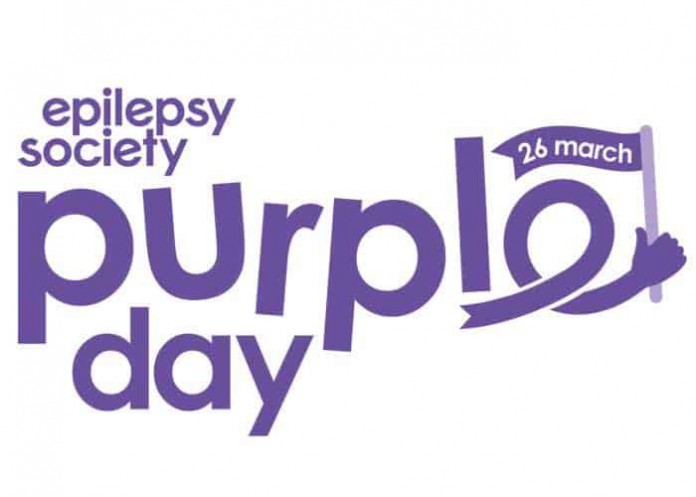The 26th of March every year is observed as ‘purple day’ or World Epilepsy Awareness day. It was first started by a fourteen year old girl Cassidy Megan, a Canadian who was herself an epilepsy patient. World Purple Day According to the World Health Organization, 50 million people suffer from this problem globally. About 80% of these reside in developing countries and more than 50% of these do not have access to appropriate treatment. India has around 10 million epilepsy patients. In the past it was thought to be due to spiritual possession, insanity and a bad omen. In many parts of the world it is thought to be contagious. Epilepsy patients face social discrimination, emotional distress, and discrimination at the work place, schools and organizations.

Important Announcement – EasyShiksha has now started Online Internship Program “Ab India Sikhega Ghar Se”

A epileptic attack occurs due to a sudden onset of excessive electrical activity in the brain, usually lasting for 1-3 minutes. Tendency for recurrent seizures with/without a secondary cause is called epilepsy. There can be an alteration of sensation, behavior, or level of consciousness during these few minutes
Epilepsy is a disorder of the brain, however it is not a mental illness. It is common, chronic, and has neurological roots. World Purple Day An epileptic attack is called fits, convulsions, seizure etc. however it is important to differentiate epilepsy from these for predicting the prognosis, to determine the duration of treatment and to decide the type of treatment. Epilepsy is also called by different terms like ‘fits’, convulsion, seizure etc. In India, it is called Apasmara.
Common triggers for epileptic seizures are:
1.Lack of sleep
- Emotional stress
- Watching visual flickers
- Irregular medication
In developing and resource poor countries a few of the important and preventable causes of epilepsy are – infections, birth injuries, stroke and head trauma. In a significant number of people it is hereditary.
Top Courses in Software Engineering
More Courses With Certification
Epilepsy can be seen in all age groups but it is most commonly observed at the childhood and old age. Few investigations required to correctly diagnose epilepsy are MRI/CT scan of the brain, EEG(electroencephalogram) and few blood tests.
In nearly 70% of these sufferers no definitive cause can be demonstrated. However 70% of all epilepsies respond to drugs and it is completely possible for patients to lead a seizure free life. There are different types of treatments available:
- Medications (more than 20-25 different medications)
- Surgical
- Nonpharmacological ( ketogenic diet, vagal nerve stimulation etc)
The medications are usually needed for a long time. In about 30% of affected people, drugs will not benefit well. In these patients, brain surgery and vagus nerve stimulation therapy is considered
WHAT TO DO WHEN SOMEONE GETS AN EPILEPTIC ATTACK?
- Don’t try to stop it, roll the patient to one side
- Protect person from injuries
- Don’t put anything in the mouth
- Allow ventilation and loosen the cloths
- Take to doctor immediately if there is frequent recurrence of seizures
GENERAL ADVICE TO PATIENTS AND THEIR CAREGIVERS
- Get examined qualified doctors and required investigations
- Regularity in medications
- Regular sleep and eating timing
- Never stop medications abruptly
- Always keep medications in excess.
- Do not over protect the patients but support and encourage when required.
- Discourage driving, swimming alone, or handling of machines while on medication
- If required/frequent seizures, inform the teacher, friends about the seizure and medications
- Avoid night swifts in works
- Mothers who are epileptics can breast feed their babies while taking medication
Empower your team. Lead the industry
Get a subscription to a library of online courses and digital learning tools for your organization with EasyShiksha
Request NowQ. Are EasyShiksha's internships truly free?
Yes, all internships offered by EasyShiksha are completely free of charge.
Q. How can I apply for an internship with EasyShiksha?
You can apply by visiting our website, browsing available internships, and following the application instructions provided.
Q. What types of internships are available through EasyShiksha?
EasyShiksha offers a wide range of internships across technology, business, marketing, healthcare, and more. Opportunities are continuously updated.
Q. Will I receive a certificate upon completing an internship?
Yes, upon successful completion, you will receive a certificate recognizing your participation and achievements.
Q. Are EasyShiksha's internship certificates recognized by universities and employers?
Yes, the certificates are recognized by universities, colleges, and employers worldwide.
Q. Is the download of certificates free or paid?
Access to internships and courses is free, but there is a small fee to download certificates, covering administrative costs.
Q. When can I start the course?
You can choose any course and start immediately without delay.
Q. What are the course and session timings?
These are fully online courses. You can learn at any time and pace. We recommend following a routine, but it depends on your schedule.
Q. What will happen when my course is over?
After completion, you will have lifetime access to the course for future reference.
Q. Can I download the notes and study material?
Yes, you can access and download course materials and have lifetime access for future reference.
Q. What software/tools would be needed for the course?
All necessary software/tools will be shared during the training as needed.
Q. I’m unable to make a payment. What should I do?
Try using a different card or account. If the problem persists, email us at info@easyshiksha.com.
Q. Do I get the certificate in hard copy?
No, only a soft copy is provided, which can be downloaded and printed if required.
Q. The payment got deducted but shows “failed”. What to do?
Technical errors may cause this. The deducted amount will be returned to your account in 7-10 working days.
Q. Payment was successful but dashboard shows ‘Buy Now’?
Sometimes payment reflection is delayed. If it takes longer than 30 minutes, email info@easyshiksha.com with the payment screenshot.
Q. What is the refund policy?
If you face technical issues, you can request a refund. No refunds are issued once the certificate has been generated.
Q. Can I enroll in a single course?
Yes, select the course of interest, fill in the details, make payment, and start learning. You will also earn a certificate.
Q. My questions are not listed above. I need further help.
Contact us at info@easyshiksha.com for further assistance.
ALSO READ: bigo-live-stands-in-solidarity-to-support-corona-warriors-through
Get Course: Android-Apps-Development







































































